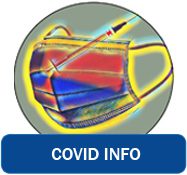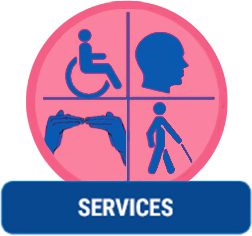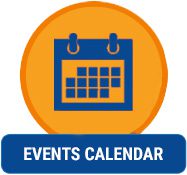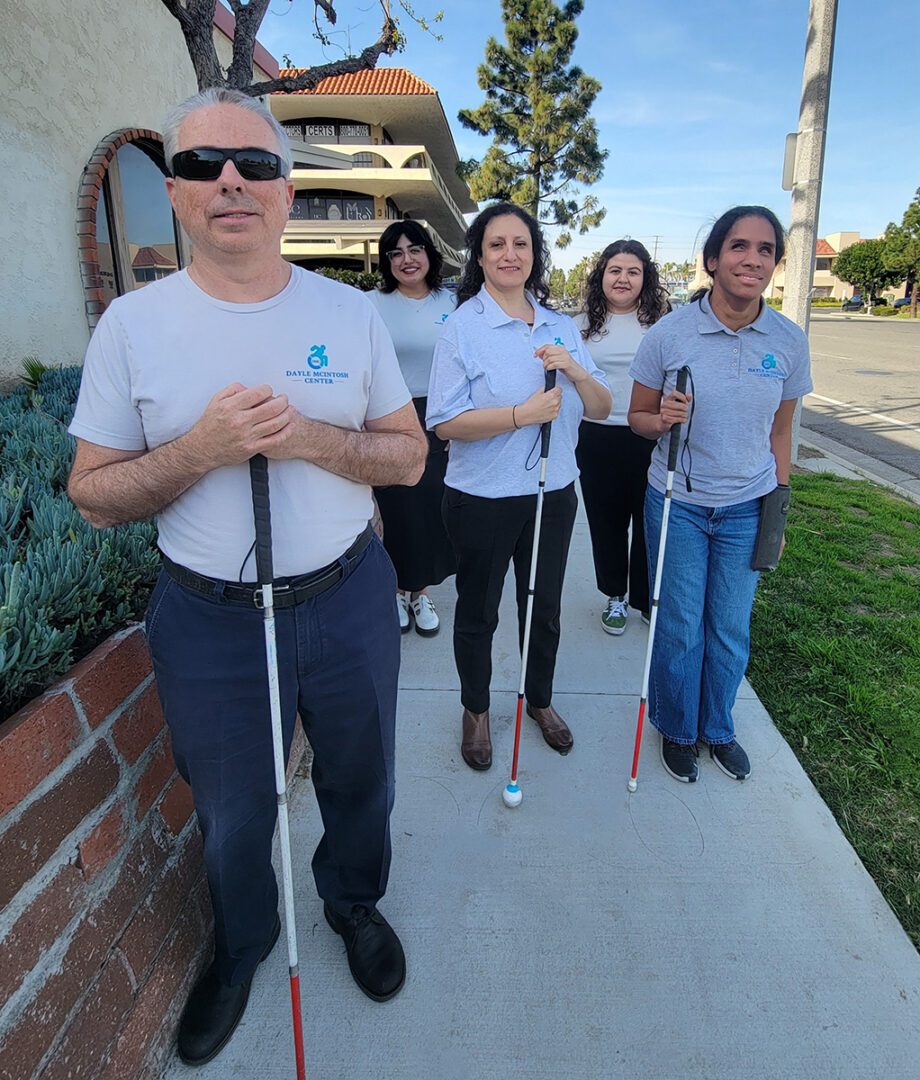
The Dayle McIntosh Center has been providing a wide variety of independent living services to persons with disabilities in Orange County since 1977. All programs and services are rooted in the independent living movement which promotes the belief that persons with disabilities have a right to live as independently as possible within their community.
In keeping with this philosophy, our services for the blind and visually impaired have helped thousands of seniors regain independence since 1996. We’ve continually expanded our programs, now offering comprehensive independent living services to individuals aged 18 to 54 with vision loss. These services, funded by a federal grant, are provided at no cost and focus on developing skills needed for daily activities as determined by the individual seeking support.
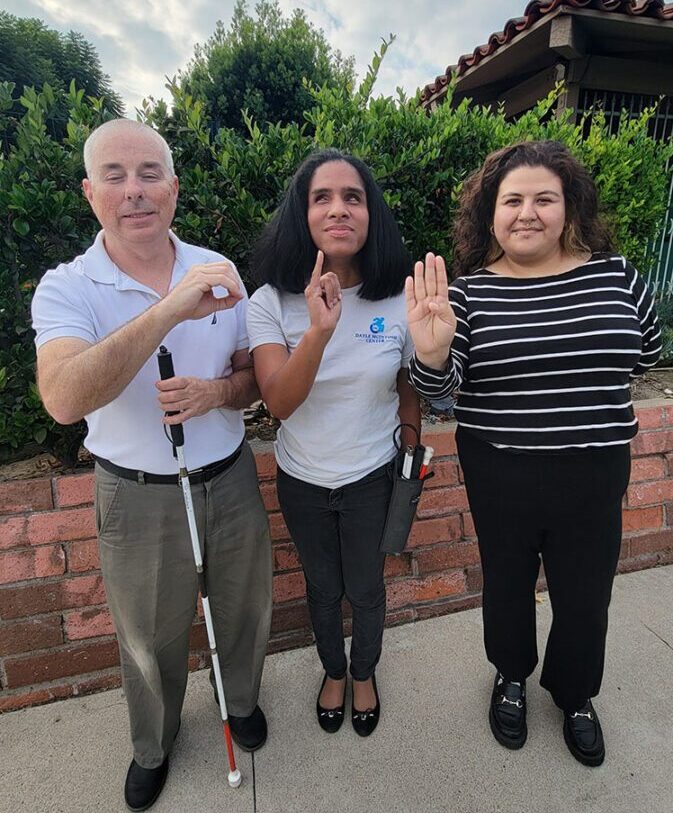
Who is Eligible for Blindness and Low Vision Services
Any individual who lives in Orange County, is 18 years of age or older, and is experiencing difficulty with daily living tasks due to severe vision loss.
Please Note: Persons between the ages of 18 to 54 cannot be employed or actively receiving services from the California Department of Rehabilitation.
Referral Process
Individuals are referred to DMC to receive Blindness and Low Vision services through a variety of sources such as case managers from senior centers, other community-based organizations, diabetic educators, hospital discharge planners, medical personnel, and by word-of-mouth. Individuals may also be self-referred.
For more information about DMC’s Blindness and Low Vision Services (BLVS) call (714)621-3300 or complete the online form.
Blindness and Low Vision Services
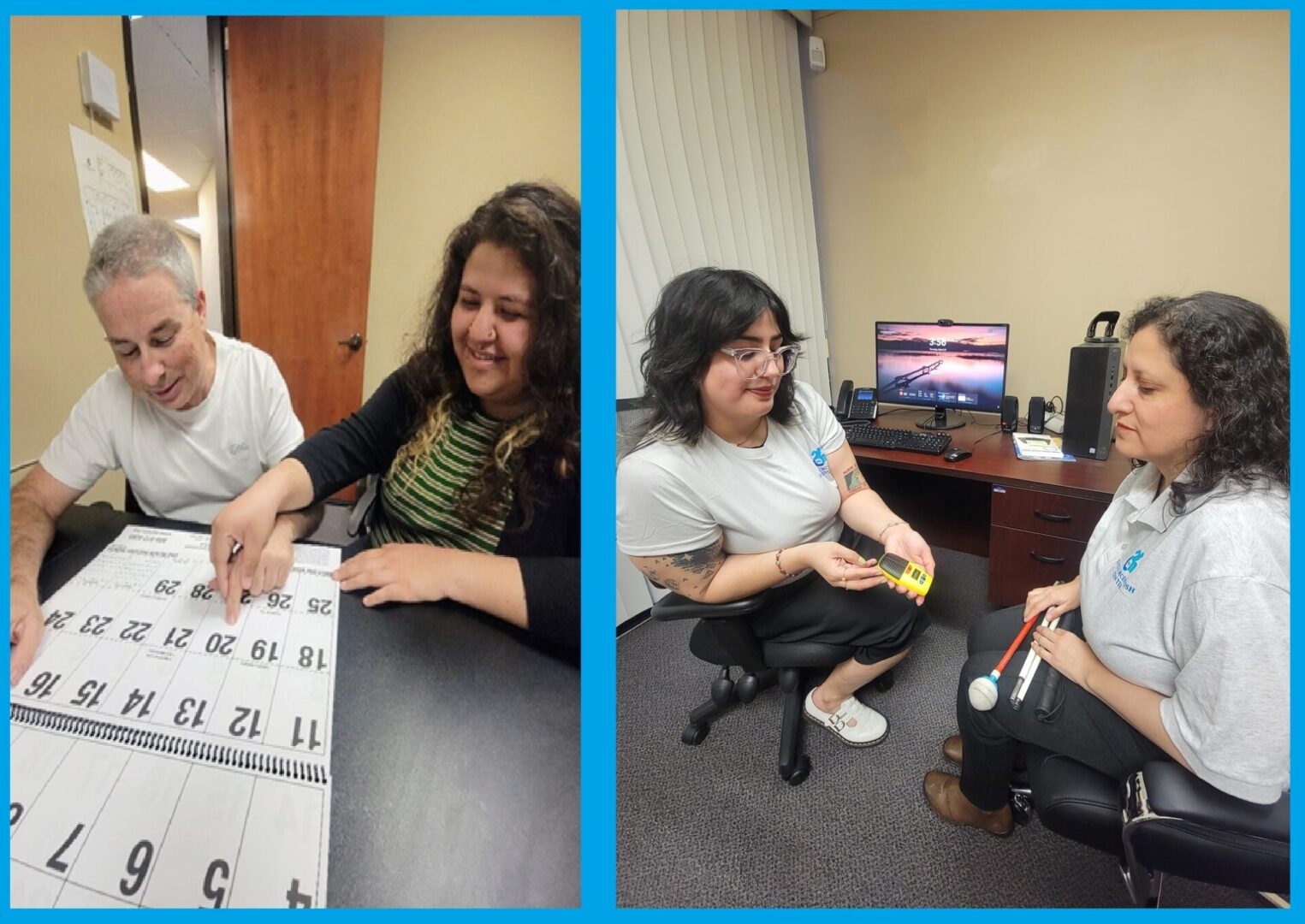
How Services Are Provided
Blindness and Low Vision services are provided in a wide variety of settings e.g. consumer’s home, hospitals, skilled nursing facilities, community centers, small groups and the Dayle McIntosh Center.
Services Available
Adjustment Counseling/Peer Support: Helping individuals and their support network adjust to blindness through both individual and group support. This includes understanding and addressing emotions, attitudes, and values that can affect progress toward personal goals. It also involves accurately recognizing one’s strengths and limitations and rebuilding a sense of pride and self-esteem.
Adjusting to vision loss can be an emotionally difficult process. At DMC, our team includes members who have lived through similar experiences and are available for personalized support sessions with individuals and their families. Additionally, our low vision peer support groups offer a secure and confidential environment to share emotions, common challenges, and valuable resources related to vision loss.
Basic Orientation: Basic training on navigating the home environment through use of trailing techniques and human guide. Navigation outside the home should only be provided by a certified orientation and mobility instructor.

Communication Assistance: Basic training in low vision written communication aids, adaptive writing techniques, and communication devices including phones, digital recorders, smart devices, and computers. This training equips individuals with essential skills to effectively communicate and utilize technology, enhancing independence and accessibility in daily life.
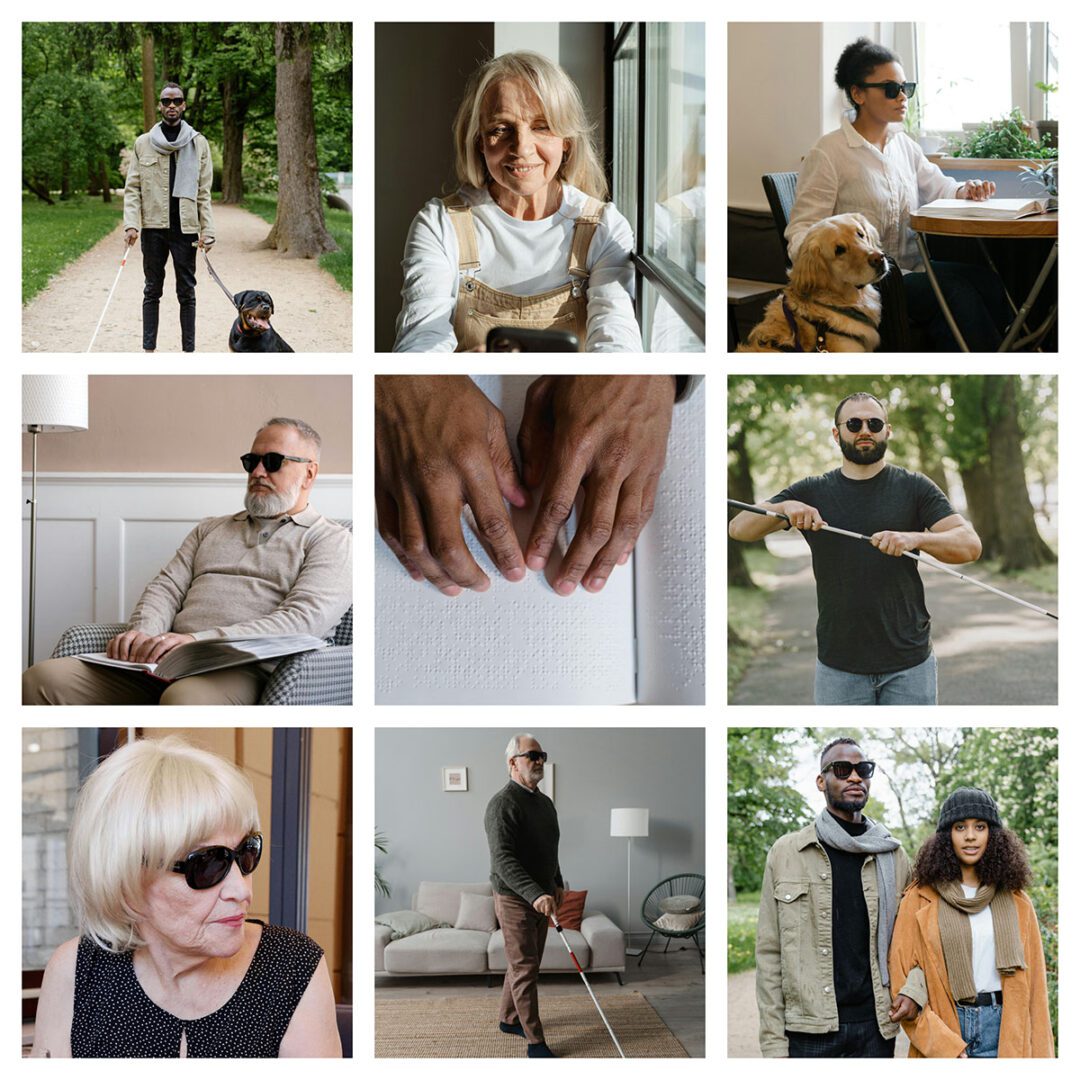
Pictured a photo grid of people of all ages from 18-55 and older adults, the two groups DMC serves. Upper left hand corner, younger adult in the park on a path with trees with a mobility cane and a guide dog; Center top- Older adult with low-vision sitting by a window with optimum light to access her cell phone; Top right; younger adult sitting at a table with guide dog standing by, reading book in Braille; Center; Center row, left side; older adult reading Braille while seated at home in an easy-chair; Center middle: pair of hands reading Braille; Center row right: middle-aged adult adjusting a mobility cane outside in a park; Bottom row left: older adult seated at a table listening to conversation; Center photo bottom rowolderad, older adult using mobility cane at home navigating living room; Bottom row right – young adult couple walking in the park during fall/winter, person on the left has arm intertwined in the other trusting on navigational guidance, both are wearing scarves.
Information and Referral: Providing information about various community-based resources that promote greater independence and quality of life. Guidance is offered on understanding specific eligibility criteria, completing the application process, and implementing these resources.
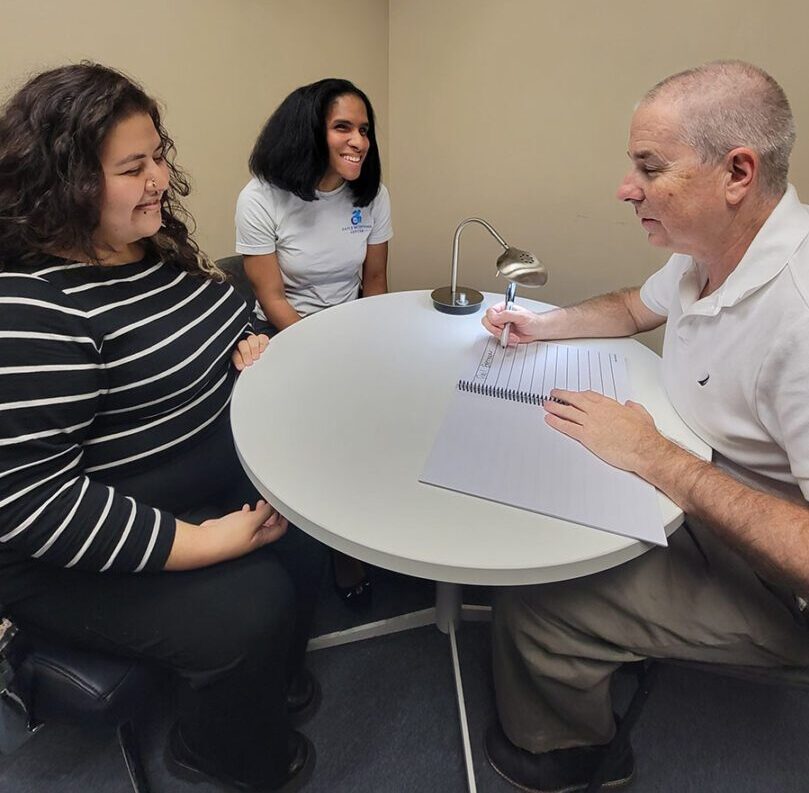
Daily Living Skills: Learning adaptive techniques to handle daily tasks and manage personal matters independently. This training covers using appliances, maintaining personal hygiene, organizing at home, handling prescriptions, and reading mail.
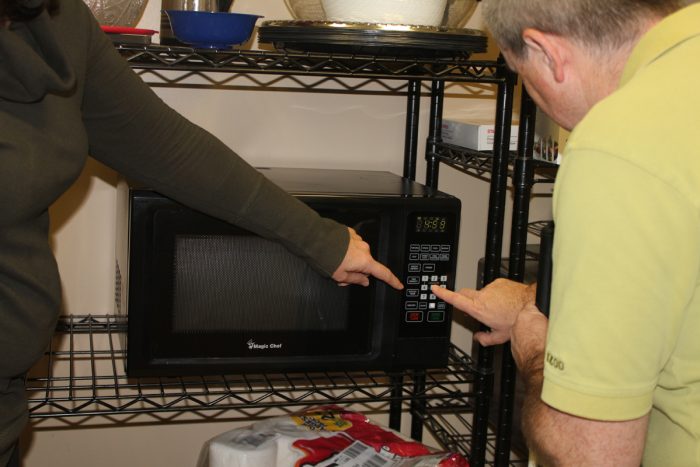
Tactile markings can be placed on household appliances to provide a specific point of reference for persons with vision loss.
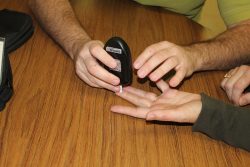
Assistive Technology Devices and Services (AT): Providing basic devices and training which enable persons with vision loss to build greater independence such as talking clocks, talking blood pressure monitors, and liquid level indicators. Hands on demonstration of more complex assistive technology such as video magnifiers, screen reader software, and smart phone accessibility features is also available.
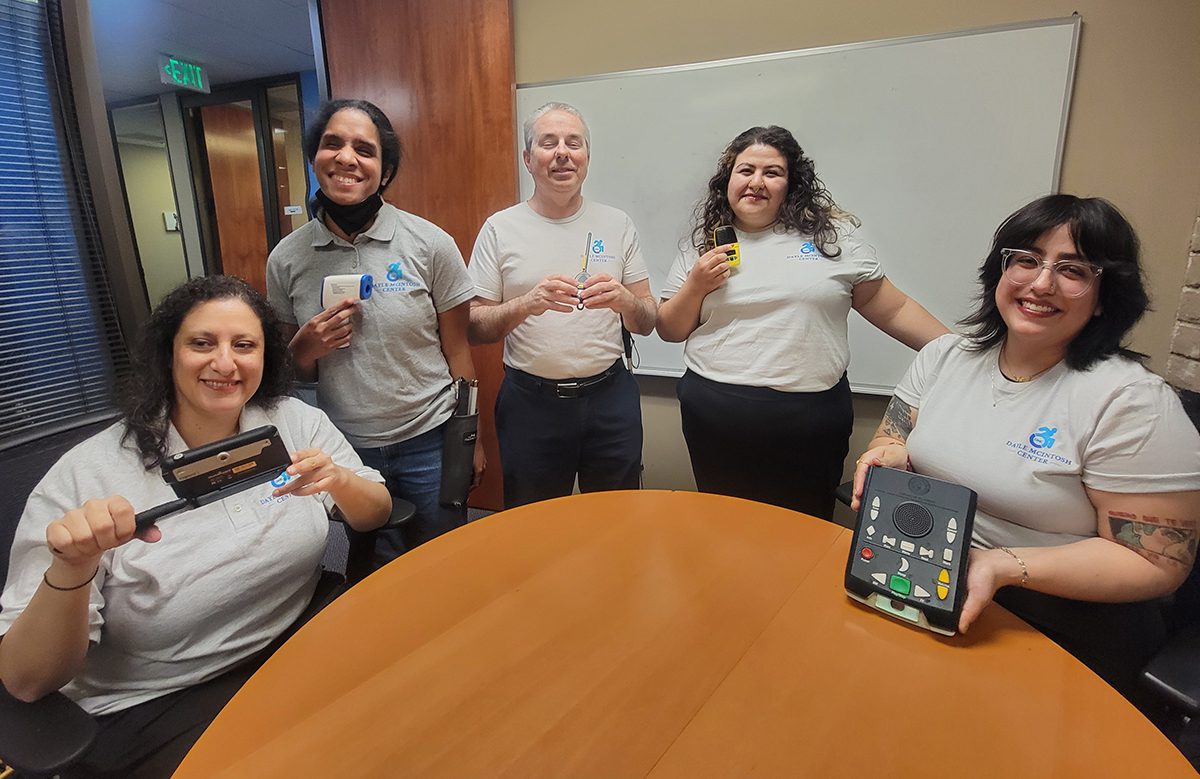
Self-Advocacy: Training to improve skills in making good decisions, solving problems effectively, assessing risks and consequences, and negotiating to obtain or maintain benefits and services. Persons with vision loss can learn to self-advocate when presented with barriers related to health care, reasonable accommodations, and disability rights.
Supportive Services: Connection to services in the community such as mobility training, ACCESS, Dial-A-Ride, personal care or In Home Supportive Services (IHSS) via referrals and assistance with completing forms or applications.
Blind/Low-Vision Support Groups facilitated by DMC
Orange County Low Vision Peer Group
This group occurs every second Wednesday of the month from 1:30 PM to 3 PM.
This group is for individuals 55 and older who are a part of the OIB program. The group is held virtually via the unlimited conference line. The call information is below:
Phone Number: (800) 941-1840
Participant code: 861304#
To download the program flyer of Blind/Low-Vision Services please CLICK HERE




